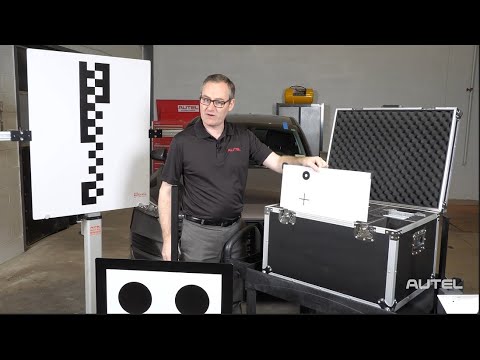
Consumer demand for safer vehicles has significantly influenced the integration of ADAS in new cars. Surveys indicate a growing preference for vehicles equipped with advanced safety features, driving manufacturers to prioritize these systems.
Why Calibration is Critical After Windshield Installation
Calibrating the ADAS system after a windshield replacement is not just a recommendation; it is a necessity. This section explores the safety implications and the potential legal and insurance ramifications of overlooking this crucial step.
Addressing Safety Concerns with ADAS in EVs
Safety is paramount in the integration of ADAS with electric vehicles. This part of the article focuses on how risks can be mitigated and reliability enhanced through advanced safety protocols and systems designed specifically for this integration.
Risks of Ignoring
portable adas Calibration
Ignoring the need for ADAS calibration after a windshield replacement can have dire consequences. This section highlights the safety risks and real-life implications of overlooking this critical maintenance step.
Conclusion
ADAS technologies are revolutionizing vehicle safety and driving experiences. From radar systems to AI algorithms, these technologies offer significant benefits in reducing accidents and enhancing driver comfort. As we move towards more automated and intelligent vehicles, the role of ADAS will become increasingly vital, paving the way for safer and more efficient roads.
Key Components and Functions of ADAS ADAS encompasses a range of features such as adaptive cruise control, collision detection, and traffic sign recognition. Each plays a crucial role in mitigating risks on the road and potentially lowering insurance claims.
Conclusion and Future Outlook
In conclusion, the integration of Advanced Driver-Assistance Systems with Electric Vehicles presents both challenges and opportunities. From enhancing safety and efficiency to pushing the boundaries of autonomous driving, this fusion is set to revolutionize the automotive industry. The future outlook is optimistic, with continuous innovations and advancements anticipated in this field.
Overcoming Barriers to Adoption
Addressing consumer skepticism and ensuring adequate infrastructure and support systems are essential for the widespread adoption of integrated ADAS in electric vehicles. This section discusses strategies to overcome these barriers.
Privacy Concerns and
Portable Adas Data
How Insurance Companies Handle Your Data An overview of the measures insurance companies take to protect the privacy of your ADAS data, adhering to regulations and ensuring confidentiality.
Sensor fusion technology integrates data from various sensors to create a comprehensive, accurate representation of the vehicle’s environment. This process is crucial for autonomous vehicles (AVs) as it enhances their perception, enabling them to navigate complex scenarios safely. Sensors commonly used in AVs include LiDAR, radar, cameras, and ultrasonic sensors, each providing unique data about the vehicle’s surroundings.
The Future of ADAS and Windshield Technology
As vehicle technology continues to advance, the integration of ADAS and windshield technology is expected to become even more sophisticated. This section explores upcoming innovations and the evolving role of calibration.
Insurance Coverage for Calibration
Some insurance policies may cover the cost of ADAS calibration following a windshield replacement. Vehicle owners are encouraged to check with their insurance providers for details.
Questions to Ask Your Technician
Before proceeding with calibration, ask about the technician’s experience, the equipment used, and any guarantees on the calibration work. This can help ensure the quality and reliability of the service.
How to Ensure Proper Calibration
Ensuring your vehicle’s ADAS system is properly calibrated after a windshield replacement involves selecting a reputable service provider and knowing the right questions to ask. This section provides guidance on making informed choices.
Introduction
Advanced Driver Assistance Systems (ADAS) represent a significant leap in automotive technology, aiming to enhance vehicle safety, improve driving comfort, and reduce accidents. These systems utilize a blend of technologies, sensors, and software to assist drivers and increasingly automate vehicle functions. In this article, we’ll explore the key technologies that underpin ADAS and how they contribute to safer, more efficient driving experiences.
The rapid advancement of technology, including improvements in sensor accuracy and software algorithms, has enabled the development of more sophisticated ADAS features. The future of ADAS is closely tied to these technological innovations, promising even greater safety benefits.
Case Studies: ADAS and Insurance
Real-world Examples of ADAS Impacting Insurance Analysis of case studies where ADAS-equipped vehicles have led to changes in insurance policies and premiums, illustrating the tangible benefits of the technology.
